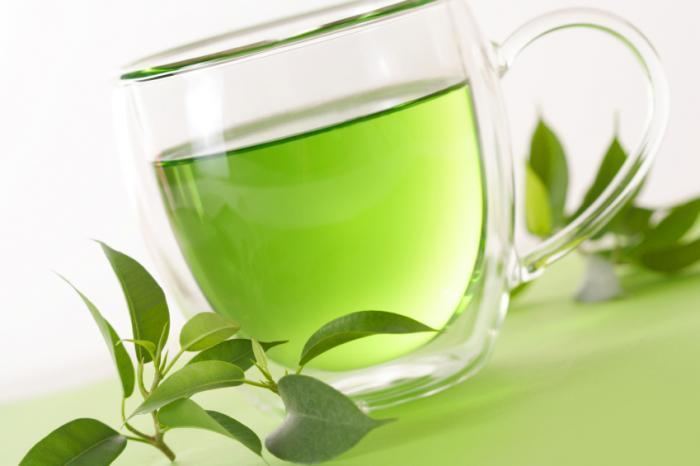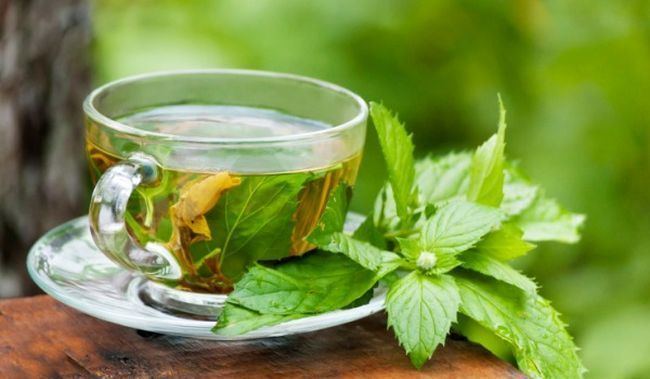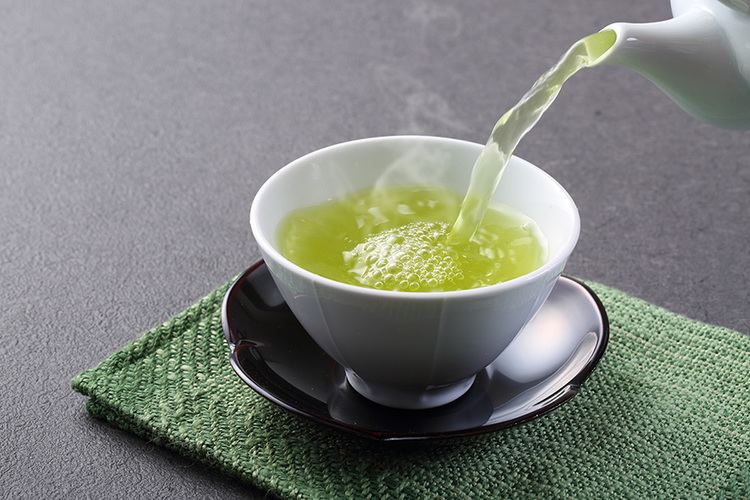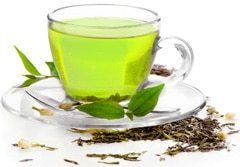Traditional Chinese 綠茶 Hanyu Pinyin IPA [lŷ.ʈʂʰǎ] | Simplified Chinese 绿茶 Hanyu Pinyin Hokkien POJ le̍k-tê | |
 | ||
Similar | ||
Quick weightloss with green tea no diet no exercise according to blood group green tea benefits
Green tea is a type of tea that is made from Camellia sinensis leaves that have not undergone the same withering and oxidation process used to make oolong and black tea. Green tea originated in China, but its production has spread to many countries in Asia.
Contents
- Quick weightloss with green tea no diet no exercise according to blood group green tea benefits
- Green tea how and when to drink it hindi
- History
- Brewing and serving
- Extracts
- Health effects
- Cancer
- Cardiovascular disease
- Glycemic control
- Hyperlipidemia
- Inflammation
- Mortality risk
- Weight loss
- Toxicity
- Growing harvesting and processing
- Import of Japanese tea
- References

Several varieties of green tea exist, which differ substantially because of the variety of C. sinensis used, growing conditions, horticultural methods, production processing, and time of harvest.

Green tea how and when to drink it hindi
History
Tea consumption has its legendary origins in China during the reign of Emperor Shennong.

A book written by Lu Yu in 600-900 AD (Tang Dynasty), "Tea Classic" (simplified Chinese: 茶经; traditional Chinese: 茶經; pinyin: chájīng), is considered important in green tea history. The Kissa Yojoki (喫茶養生記 Book of Tea), written by Zen priest Eisai in 1191, describes how drinking green tea may affect five vital organs, the shapes of tea plants, flowers and leaves, and how to grow and process tea leaves.
Brewing and serving

Steeping, or brewing, is the process of making tea, generally using two grams of tea per 100 ml of water or about 1 teaspoon of green tea per 150 ml cup. Higher-quality teas, like gyokuro, use more tea leaves and are steeped multiple times for short durations.
Steeping temperatures range from 61°C (142°F) to 87°C (189°F) and times from 30 seconds to three minutes.

Generally, lower-quality green teas are steeped hotter and longer while higher-quality teas are steeped cooler and shorter, but usually for multiple times (2-3 typically). Steeping too hot or for too long results in the release of excessive amounts of tannins, leading to a bitter, astringent brew, regardless of initial quality. The brew’s taste is also affected by the steeping technique. Two important techniques are to warm the steeping container beforehand to prevent the tea from immediately cooling down and to leave the tea leaf in the pot and gradually add more hot water as you drink the tea.
Extracts
Green tea extracts have been used in traditional Chinese and Indian medicine for a variety of uses.

Green tea leaves are initially processed by soaking in an alcohol solution, which may be further concentrated to various levels; byproducts of the process are also packaged and used. Extracts may be sold in liquid, powder, capsule, or tablet form. Decaffeinated versions are also available.
Green tea extract supplements are accessible over the counter in various forms. Standardized green tea extract is 90 percent total polyphenols, and 1 capsule equals 5 cups of tea.
Health effects
Regular green tea is 99.9% water, provides 1 Calorie per 100 mL serving, is devoid of significant nutrient content (table) and contains phytochemicals, such as polyphenols and caffeine. Polyphenols found in green tea include epigallocatechin gallate (EGCG), epicatechin gallate, epicatechins and flavanols, which have antioxidant, anticarcinogen, anti-inflammatory, and anti-radiation biochemical effects in vitro. Other components include three kinds of flavonoids, known as kaempferol, quercetin, and myricetin. A remarkably higher content of myricetin is detected in tea and its extracts than in many other plants, and this high concentration of myricetin may have some implications for the experimentally-observed bioactivity of tea and its extracts in vitro.
Although numerous claims have been made for the health benefits of green tea, human clinical research has not provided conclusive evidence of any effects. In 2011, a panel of scientists published a report on the claims for health effects at the request of the European Commission: in general they found that the claims made for green tea were not supported by sufficient scientific evidence. Although the mean content of flavonoids and catechins in a cup of green tea is higher than that in the same volume of other food and drink items that are traditionally considered to promote health, flavonoids and catechins have no proven biological effect in humans.
Cancer
There is no conclusive evidence that green tea helps to prevent or treat cancer in people. A review of existing studies concluded that while suggestive evidence existed, it did not amount to a clear indication of benefit.
Daily consumption of black tea (but not green tea) has been associated with a significant reduction in death from all cancers. There is limited evidence to suggest that green tea consumption may be associated with a slightly lower risk of esophageal cancer in the Chinese population, a lower risk of lung cancer in women, and a lower risk of oral cancer in Asian people. A 2015 meta-analysis of nine prospective cohort studies concluded that a high amount of green tea consumption may be associated with a lower risk of liver cancer in Asian women. This association was not seen in Asian men or when one cup of green tea was consumed daily. Similarly, another analysis of observational data conducted in 2012 suggested that green tea consumption may have a favorable effect on lung cancer risk. The observed effect was strongest in those who consumed more than seven cups of green tea daily. A 2011 meta-analysis of epidemiological studies found limited evidence that green tea consumption may be associated with a moderately reduced risk of liver cancer in Chinese and Japanese people. Limited evidence suggests that green tea consumption is not associated with the risk of developing pancreatic cancer or prostate cancer. The link between green tea consumption and stomach cancer risk is unclear due to inconsistent evidence.
Green tea interferes with the chemotherapy drug bortezomib (Velcade) and other boronic acid-based proteasome inhibitors, and should be avoided by people taking these medications.
Cardiovascular disease
Daily consumption of green tea has been associated with a lower risk of death from cardiovascular disease. In a 2015 meta-analysis of observational studies, an increase in one cup of green tea per day was associated with a 5% lower risk of death from cardiovascular causes. Green tea consumption may be associated with a reduced risk of stroke. A 2013 Cochrane review of randomized controlled trials concluded that green tea consumption for 3–6 months appears to lower systolic and diastolic blood pressures a small amount (about 3 mm Hg each). Additional analyses examining the effects of long-term green tea consumption on blood pressure have reached similar conclusions.
Glycemic control
Green tea consumption lowers fasting blood sugar but in clinical studies the beverage's effect on hemoglobin A1c and fasting insulin levels was inconsistent.
Hyperlipidemia
Drinking green tea or taking green tea supplements decreases the blood concentration of total cholesterol (about 7 mg/dL), LDL cholesterol (about 2 mg/dL), and does not affect the concentration of HDL cholesterol. A 2013 Cochrane review performed a meta-analysis of longer-term randomized controlled trials (>3 months duration) and concluded that green tea consumption lowers total and LDL cholesterol concentrations in the blood.
Inflammation
A 2015 systematic review and meta-analysis of 11 randomized controlled trials found that green tea consumption was not significantly associated with lower plasma levels of C-reactive protein levels (a marker of inflammation).
Mortality risk
Daily consumption of green tea is significantly associated with a lower risk of death from any cause; an increase of one cup of green tea per day is linked with a 4% lower risk of death from any cause. A separate analysis found an increase of three cups of green tea per day was associated with a lower risk of death from any cause.
Weight loss
There is no conclusive evidence that green tea aids in weight loss.
Toxicity
Moderate, regular, and habitual consumption of green tea is safe; however, there are reports of liver toxicity in humans after consuming high doses (10–29 mg/kg/day) of green tea extract dietary supplements, and high doses may act as a pro-oxidant to damage DNA.
Growing, harvesting and processing
Green tea is processed and grown in a variety of ways, depending on the type of green tea desired. As a result of these methods, maximum amounts of polyphenols and volatile organic compounds are retained, affecting aroma and taste. The growing conditions can be broken down into two basic types − those grown in the sun and those grown under the shade. The green tea plants are grown in rows that are pruned to produce shoots in a regular manner, and in general are harvested three times per year. The first flush takes place in late April to early May. The second harvest usually takes place from June through July, and the third picking takes place in late July to early August. Sometimes, there will also be the fourth harvest. It is the first flush in the spring that brings the best-quality leaves, with higher prices to match.
Green tea is processed using either artisanal or modern methods. Sun-drying, basket or charcoal firing, or pan-firing are common artisanal methods. Oven-drying, tumbling, or steaming are common modern methods. Processed green teas, known as aracha are stored under low humidity refrigeration in 30- or 60-kg paper bags at 0–5 °C (32–41 °F). This aracha has yet to be refined at this stage, with a final firing taking place before blending, selection and packaging take place. The leaves in this state will be re-fired throughout the year as they are needed, giving the green teas a longer shelf-life and better flavor. The first flush tea of May will readily store in this fashion until the next year's harvest. After this re-drying process, each crude tea will be sifted and graded according to size. Finally, each lot will be blended according to the blending order by the tasters and packed for sale.
Import of Japanese tea
On 17 June 2011, radioactive cesium of 1,038 becquerels per kilogram was detected at Charles de Gaulle airport in France in tea leaves imported from Shizuoka Prefecture, Japan as a result of the Fukushima Daiichi nuclear disaster, which was more than twice as much as the restricted amount of 500 becquerels per kilogram designated by the European Union, and the government of France announced that they rejected the tea leaves, which amounted to 162 kilograms (357 lb). The governor of Shizuoka Prefecture Heita Kawakatsu stated that "there is absolutely no problem when they [people] drink them because it will be diluted to about ten becquerels per kilogram when they steep them even if the leaves have 1,000 becquerels per kilogram," which was a consequence of own examinations of the prefecture. Minister for Consumer Affairs and Food Safety Renhō stated on 3 June 2011, that "there are cases in which aracha are sold as furikake [condiments sprinkled on rice] and so on and they are eaten as they are, therefore we think that it is important to inspect tea leaves including aracha from the viewpoint of consumers' safety."
